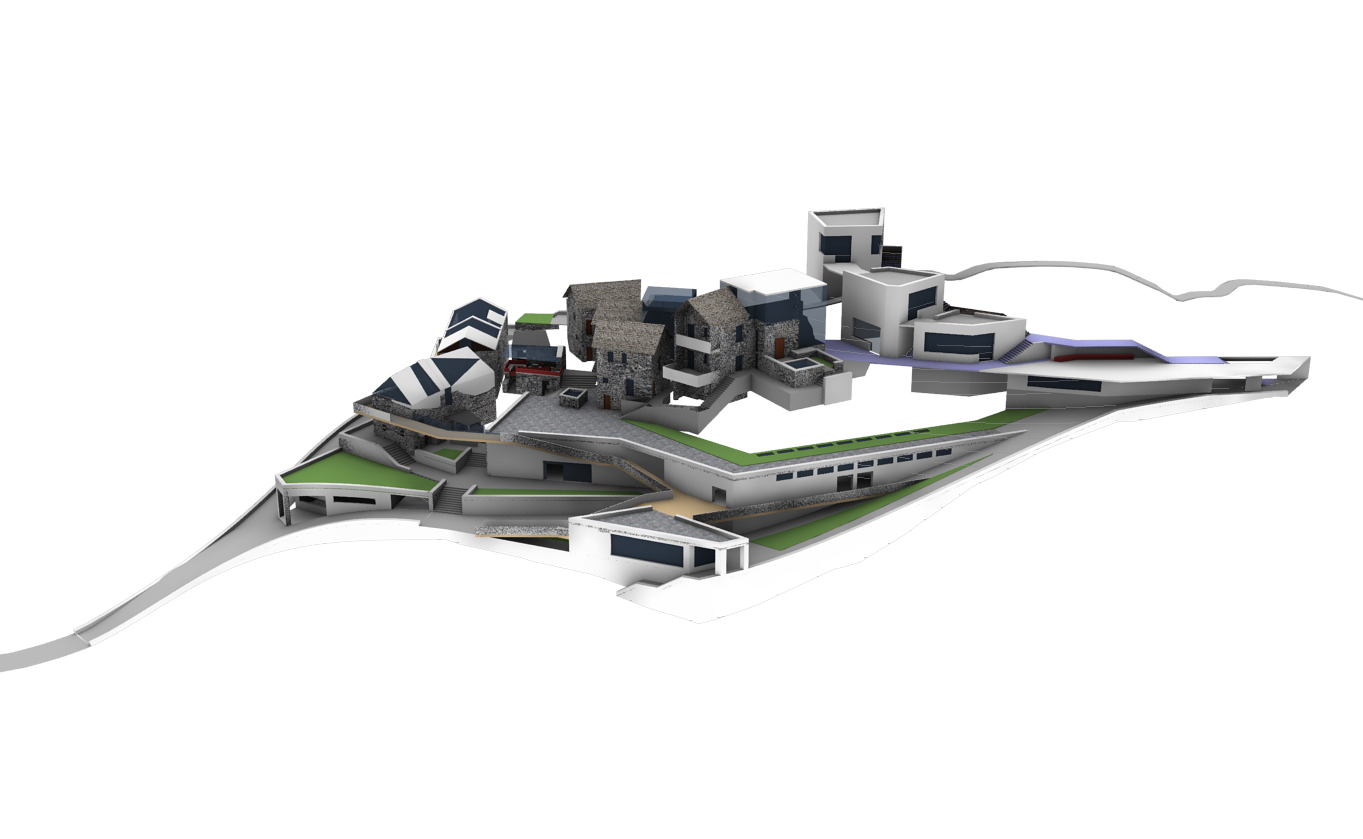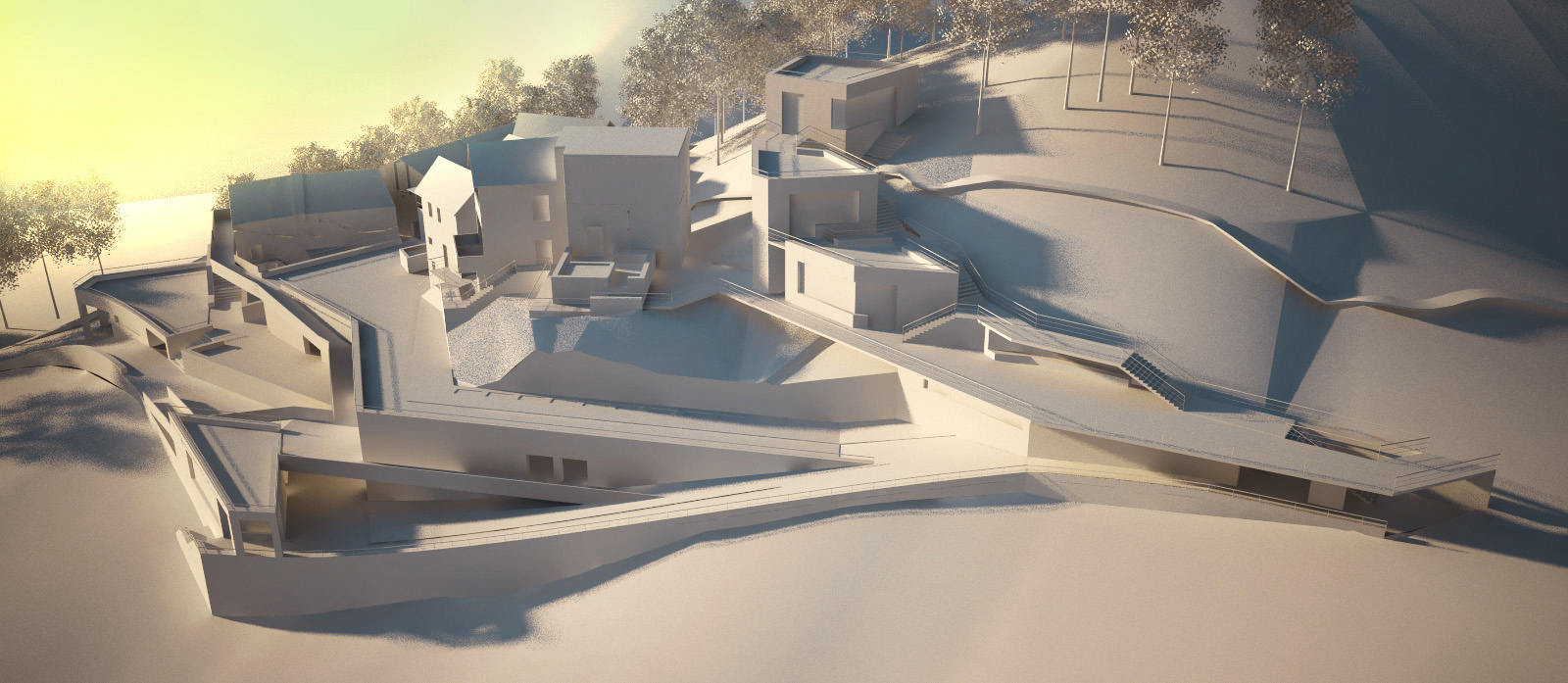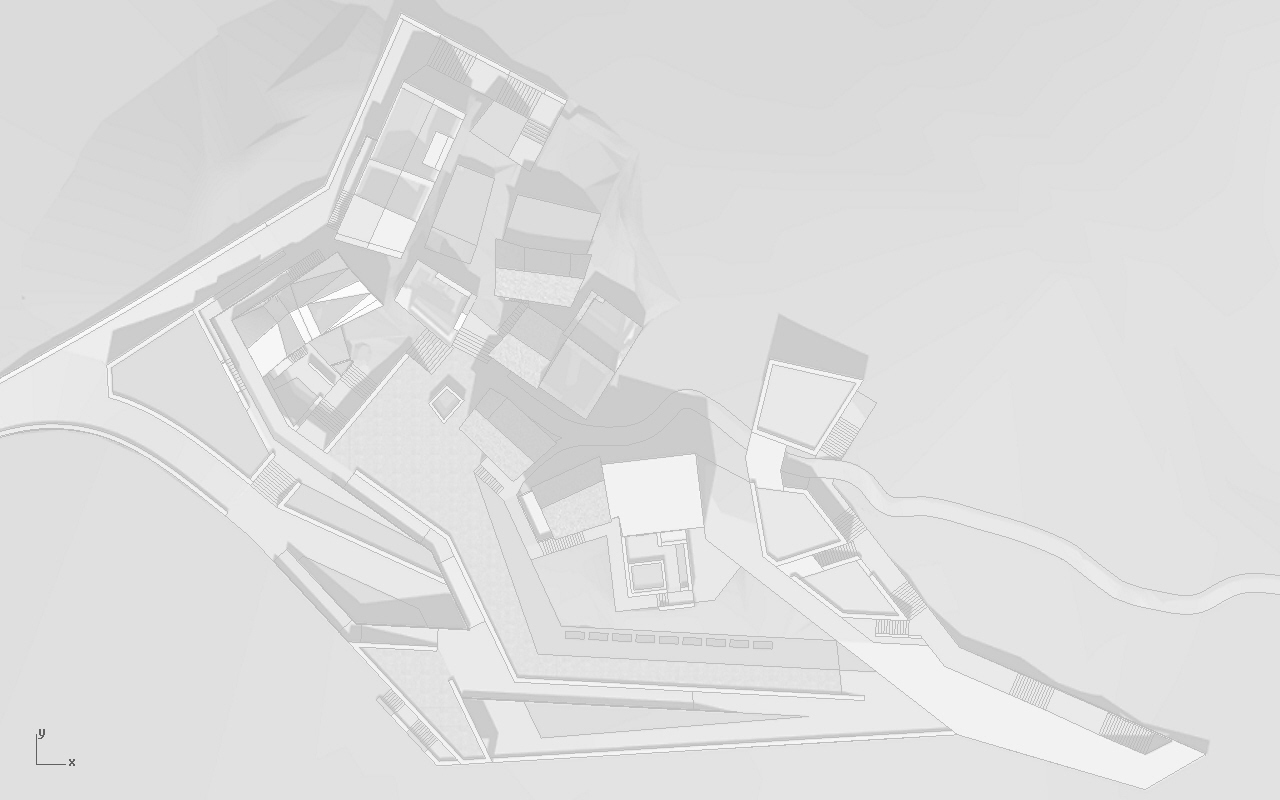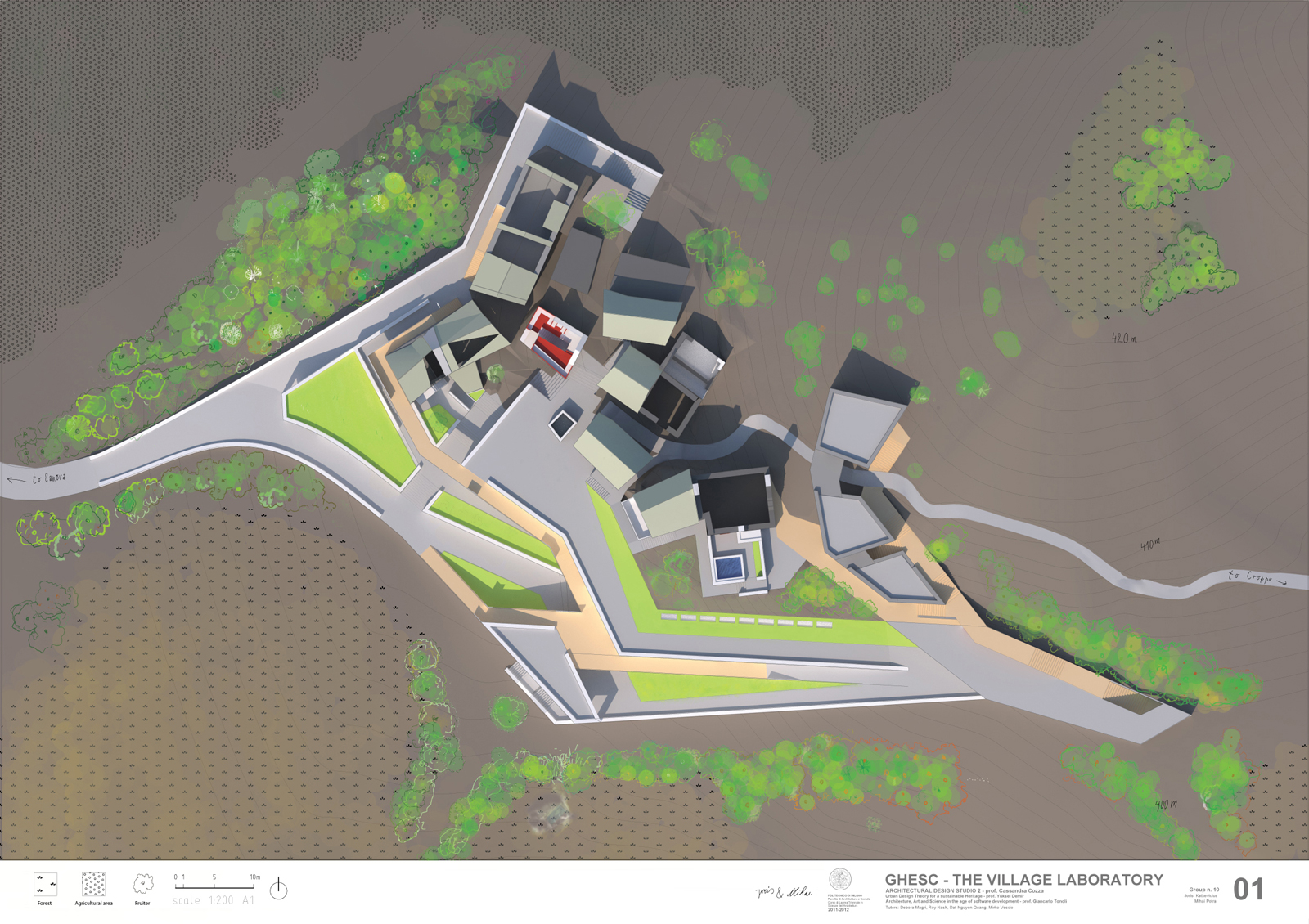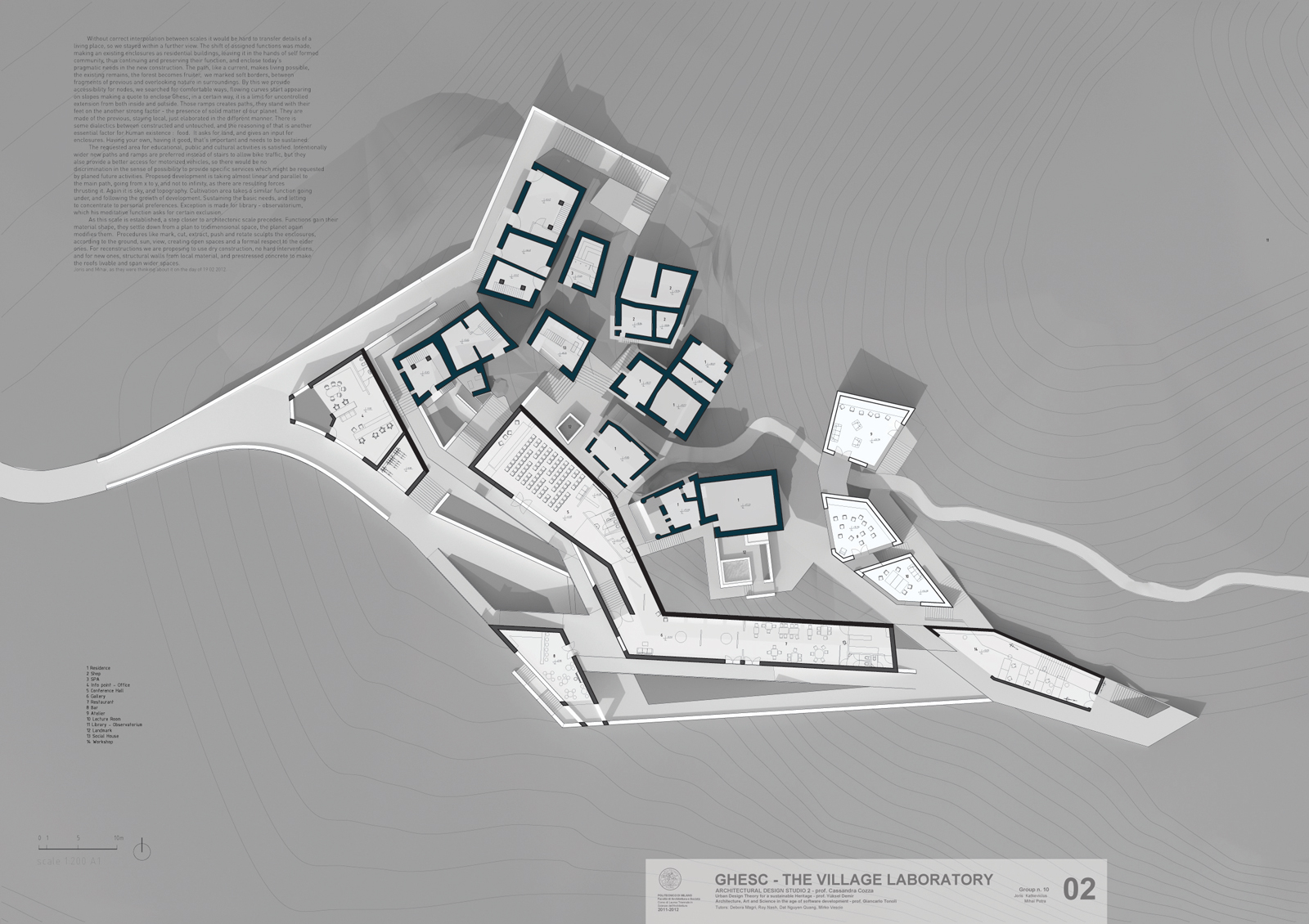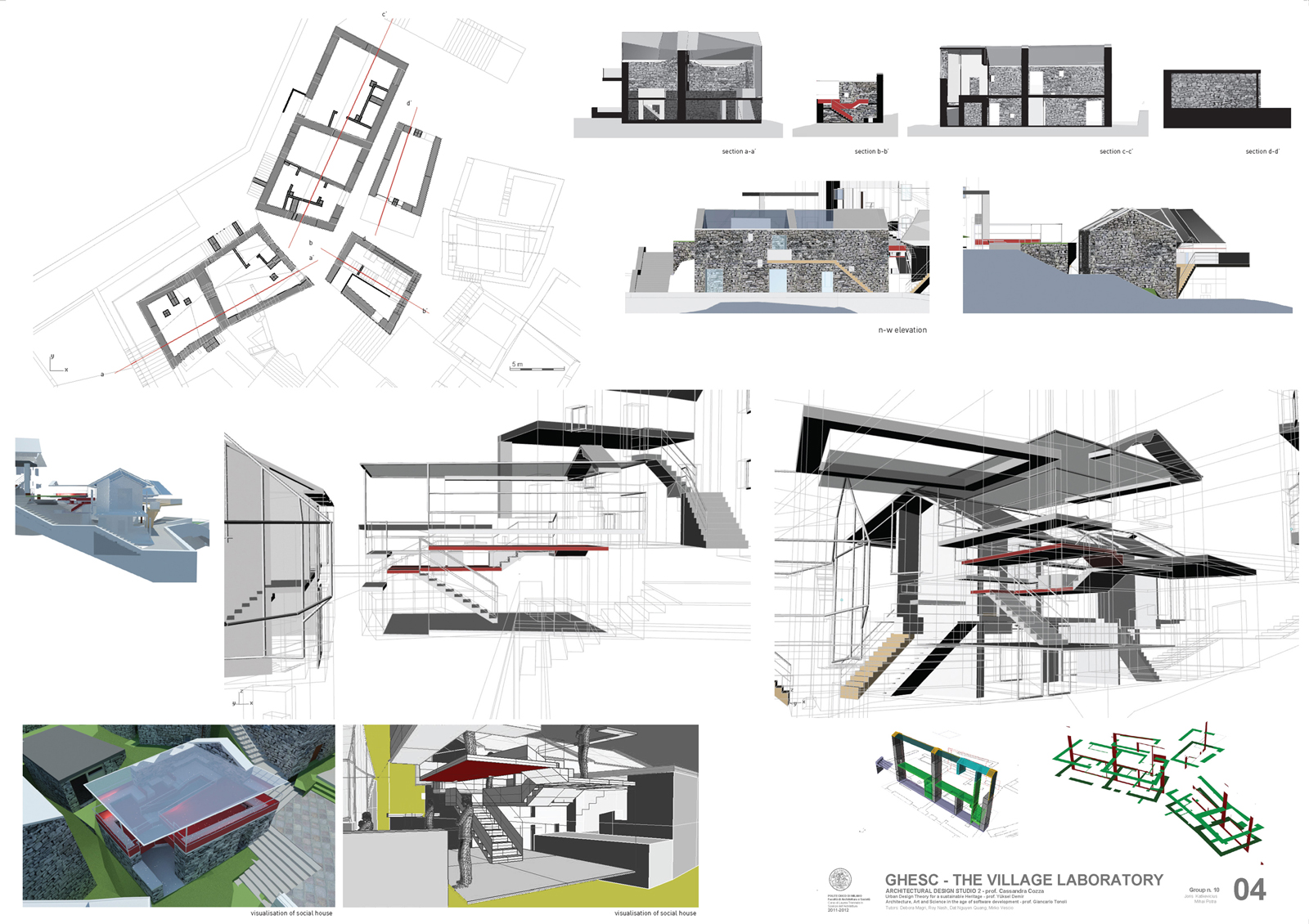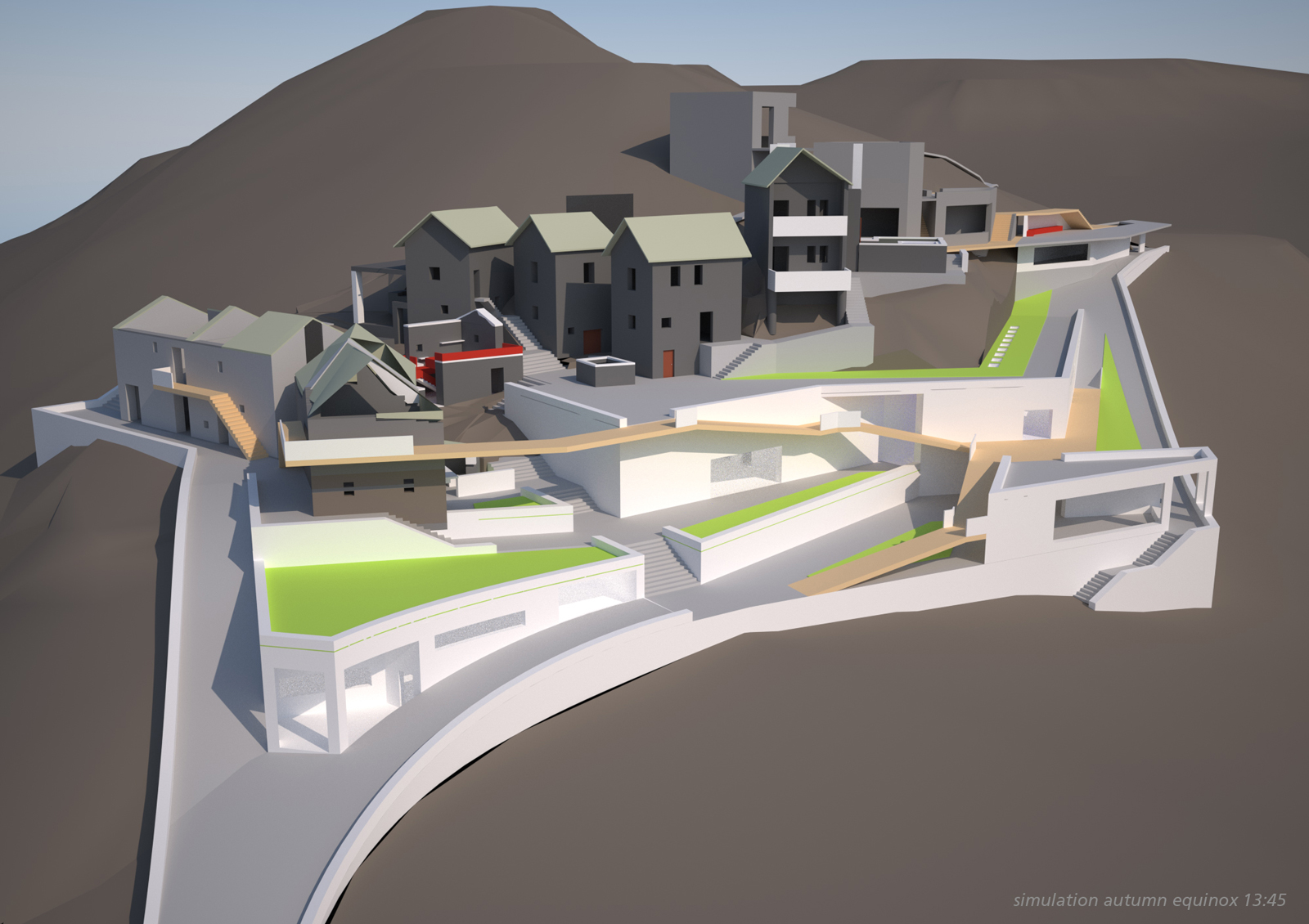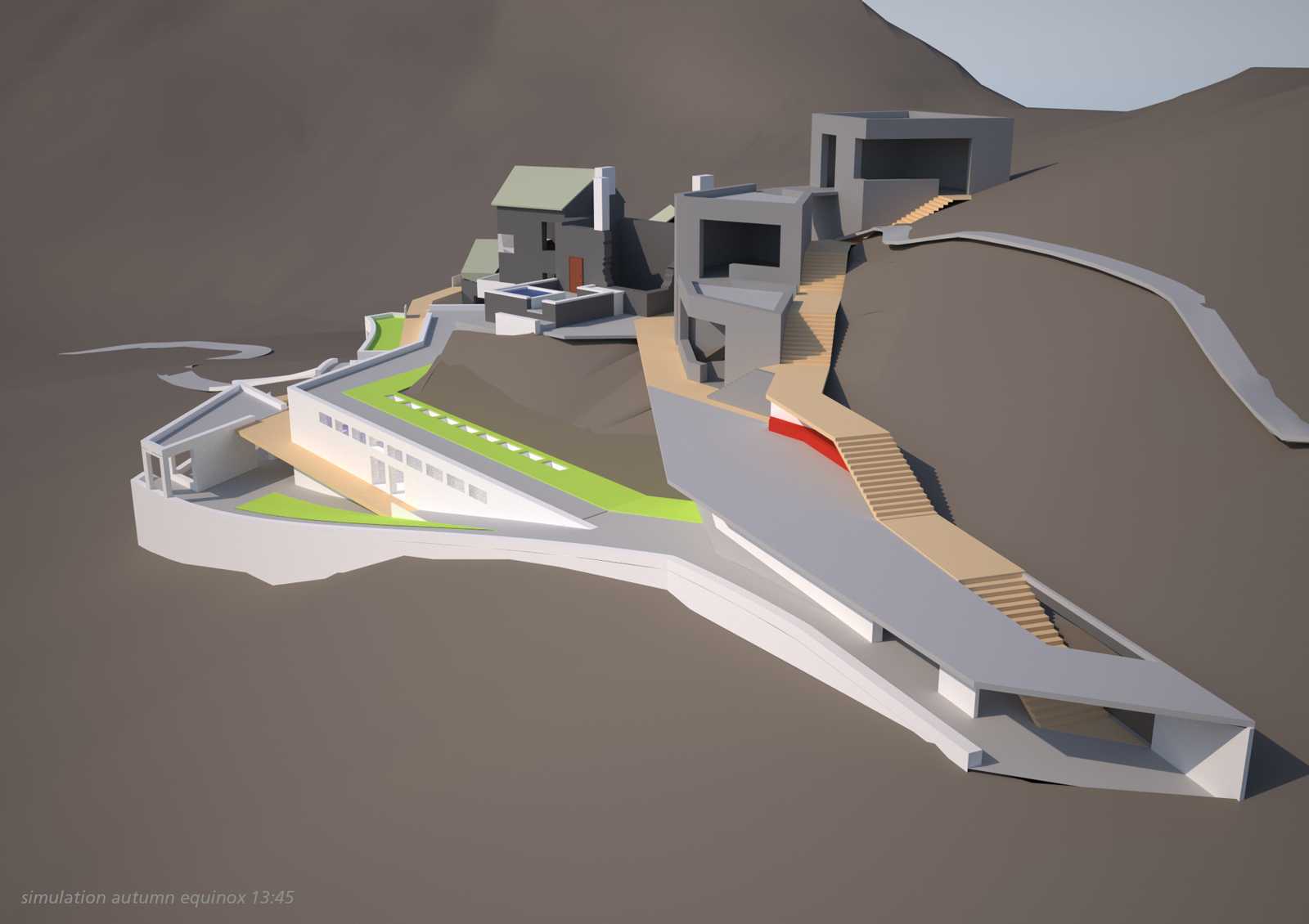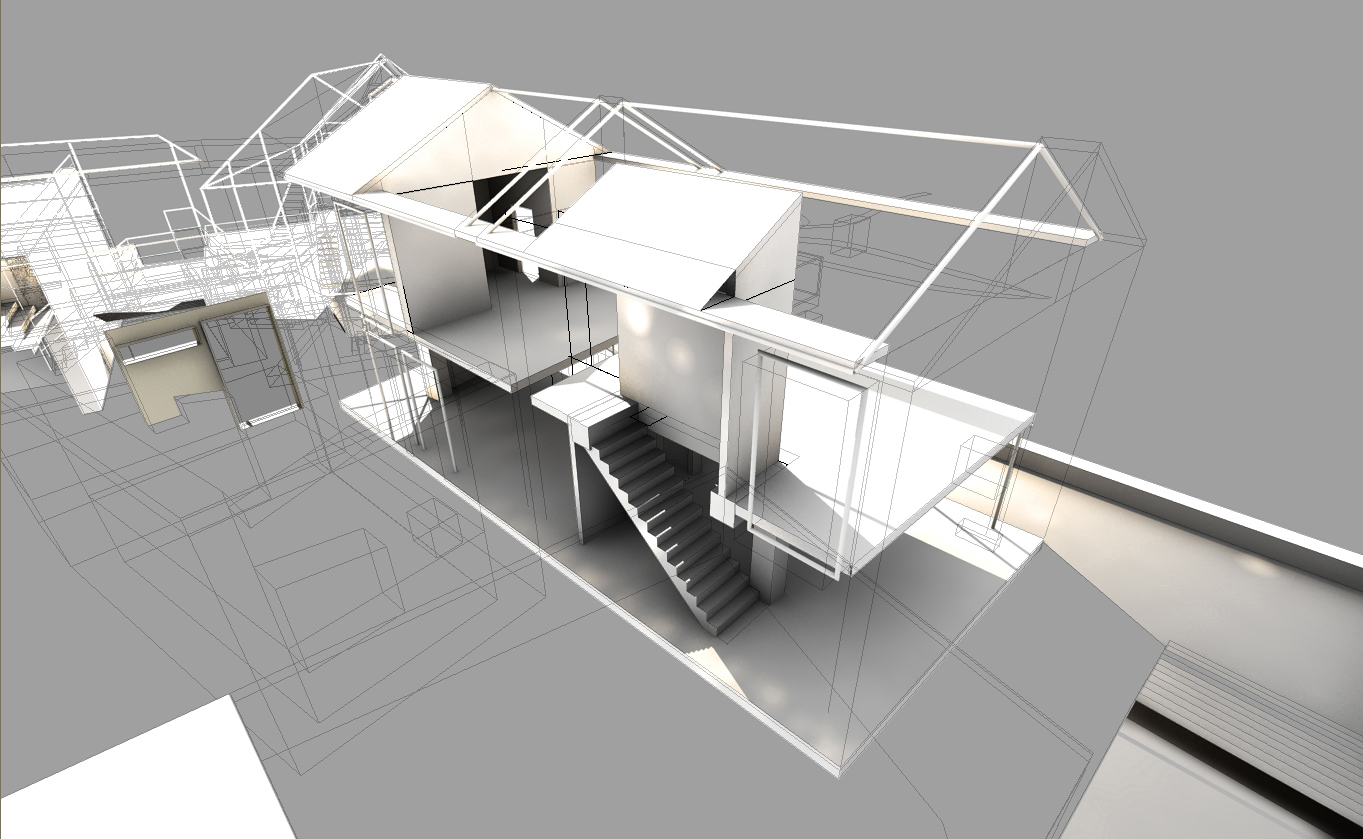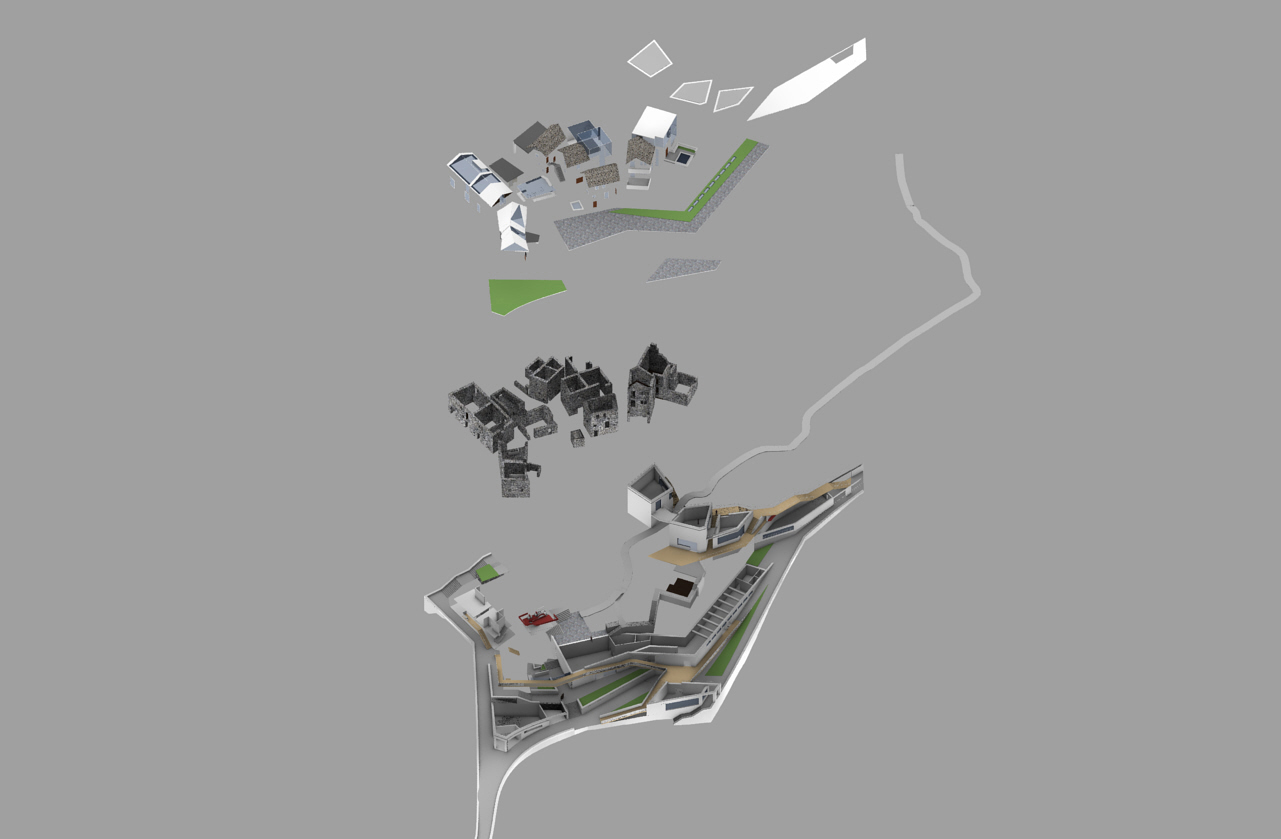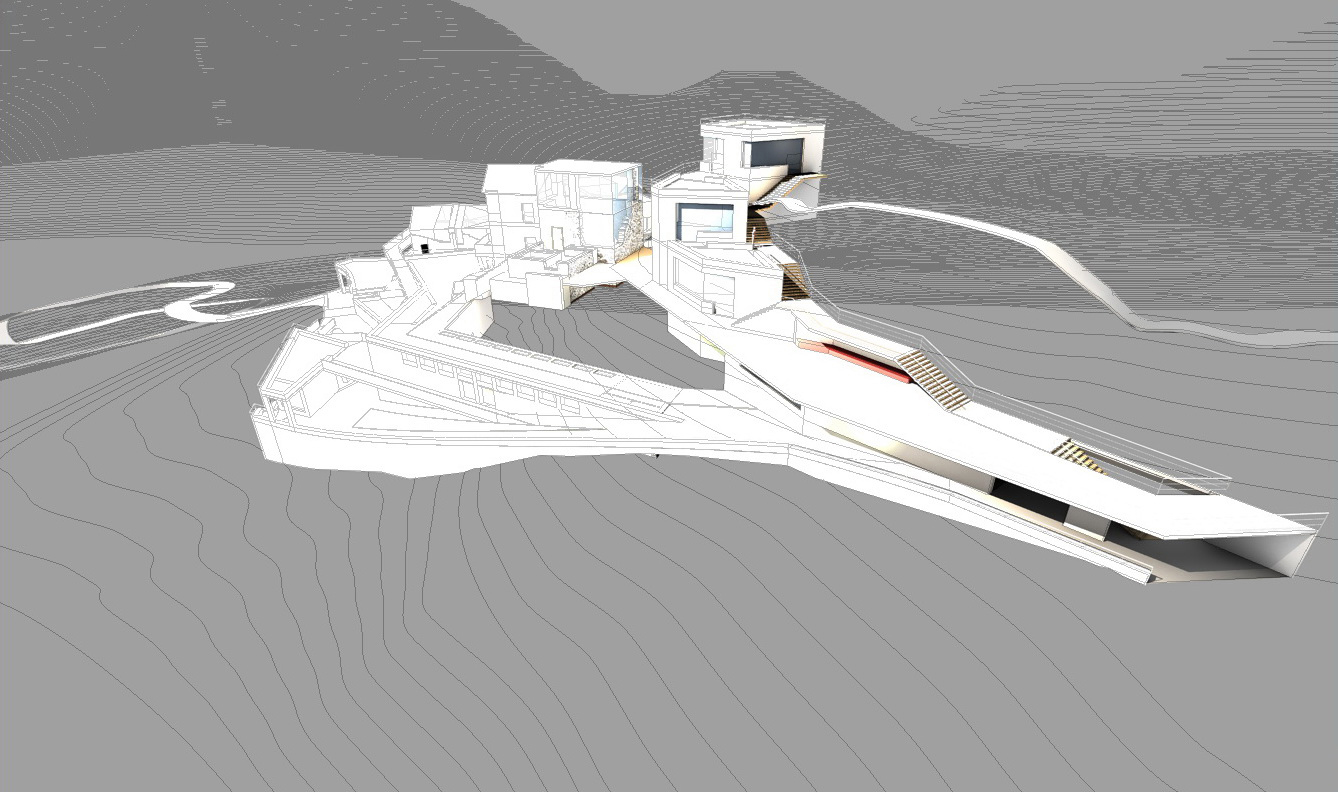
Ghesch - Village / Laboratory. Italy.
Restoration and transformation of an abandoned village.
Without correct interpolation between scales, it would be hard to transfer details of a living place, so we stayed within a further view. The shift of assigned functions was made, making an existing enclosure as residential buildings, leaving it in the hands of self-forme community, thus continuing and preserving their function, and enclose today’s pragmatic needs in the new construction. The path, like a current, makes living possible, the existing remains, the forest becomes fruiter, we marked soft borders, between fragments of previous and overlooking nature in surroundings. By this we provide accessibility for nodes, we searched for comfortable ways, flowing curves start appearing on slopes making a quote to enclose Ghesc, in a certain way, it is a limit for an uncontrolled extension from both inside and outside. Those ramps create paths, they stand with their feet on another strong factor ‐ the presence of solid matter of our planet. They are made of the previous, staying local, just elaborated in a different manner. There is some dialectics between constructed and untouched, and the reasoning of that is another essential factor for human existence: food. It asks for land and gives input for enclosures. Having your own, having it good, that’s important and needs to be sustained. The requested area for educational, public, and cultural activities is satisfied. Intentionally wider new paths and ramps are preferred instead of stairs to allow bike traffic, but they also provide better access for motorized vehicles, so there would be no discrimination in the sense of possibility to provide specific services that might be requested by planned future activities. The proposed development is taking almost linear and parallel to the main path, going from x to y, and not to infinity, as there are resulting forces thrusting it. Again it is sky and topography. The cultivation area takes a similar function going under and following the growth of development. Sustaining the basic needs, and letting to concentrate on personal preferences. The exception is made for library ‐ observatorium, which his meditative function asks for certain exclusion. As this scale is established, a step closer to the architectonic scale precedes. Functions gain their material shape, they settle down from a plan to tridimensional space, the planet again modifies them. Procedures like a mark, cut, extract, push and rotate sculpts the enclosures, according to the ground, sun, view, creating open spaces, and formal respect to the elder ones. For reconstructions, we are proposing to use dry construction, no hard interventions, and for new ones, structural walls from local material, and prestressed concrete to make the roofs livable and span wider spaces.
NAME
Ghesch
YEAR
2012
CATEGORY
Architecture
LOCATION
Ghesch in Val d’Ossola, Italia
